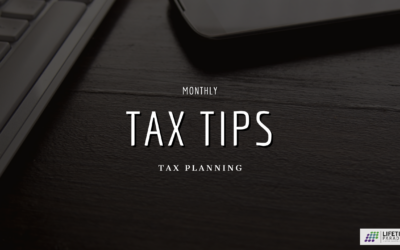Financial Independence
A Better Perspective
Podcast
EPISODE 16 The Tax Saving Logic Behind Roth IRAs
Presented by Lance Edwards and Randy Luebke
In this episode of “Financial Independence – A Better Perspective”, Lance and Randy do a deep dive into the math behind the tax saving logic and advantages of having a Roth IRA, which they call “the granddaddy of IRAs.”
They also discuss related issues, like the Roth 401(k) and the “back door Roth.”
What you’ll learn in this episode:
- Randy explains the difference between the Roth IRA and non-Roth IRAs. With the Roth, you’re going to pay taxes on the money you earn and put that after-tax money into the retirement plan. With a traditional retirement plan, if you earn a dollar, you will put that whole dollar into the retirement plan pre-tax. You won’t pay taxes on it. So you have that whole dollar earning interest and growing in value – BUT when you take it out you have to pay those taxes. The Roth IRA turns that around – instead of paying taxes tomorrow, you pay today.
- Randy debunks the expression “Do you tax the seed or tax the harvest?” The implication is that it makes more sense to pay tax on a smaller amount than a larger amount. But if you do the math, it doesn’t work that way. Say you put $100,000 in a traditional retirement account. No taxes are taken out. Let that money double over a period of time, to $200,000. When taxes need to be paid, when you take the money out at the harvest, you pay 25% on that $200,000. $50,000. That leaves you with $150,000. On the other hand, if you pay a tax on the seed, say you start with $100,000 and pay that 25% upfront. So you have $75,000 to put into your retirement account. You double that over time. So now you have $150,000 but don’t have to pay any taxes on it. Both approaches net you the same amount.
- In the pre-Roth days, traditional financial planning was: Put your money into retirement accounts while you’re working and earning money and you’re in a higher tax bracket. Then when you retire, your income and your taxes will be lower. That is the perfect time to take it out. The only problem is, for a lot of clients making a lot of money, their taxes won’t go down because they still have a large income during their retirement.
- Tax laws change all the time, so even if they don’t raise taxes directly, the government could still find ways to tax you more. Randy illustrates using a now defunct deduction on credit cards and car loans and the interest on anything. Now, he adds, we have this “salt tax” limitation with people who have homes in high value markets. They used to be able to deduct the interest they paid on the mortgage. Now they’re limited to $10,000.
- Overall, Randy believes the Roth IRA makes sense because with taxes super low today, you’ll most likely pay at a much lower rate than if you wait.
- As far as contributing to a Roth, there is an income limitation that can change just by indexing. Randy notes two exceptions, starting with 401(k) Roth programs. With these company sponsored plans there’s no income limitation. You can earn as much as you want and be allowed to make the maximum contribution to the 401(k), which this year is $19,500.
- If you’re self-employed, you can sponsor your own Roth 401(k), and have no limitation on your income. Owning an investment property is also considered a job, even if it’s a side gig. There’s nothing that prevents you from having multiple 401(k)s or multiple IRAs. Randy gets into the weeds of the mathematical possibilities when you have multiple plans.
- A backdoor Roth IRA is not an official type of retirement account. Instead, it is an informal name for a complicated, IRS-sanctioned method for high-income taxpayers to fund a Roth, even if their income is higher than the maximum the IRS allows for regular Roth contributions. There are no limitations in conversions. You can buy a traditional IRA today and later convert that back door into a Roth IRA.
- Your contributions are limited by the defined contribution limits for the IRA, a SEP or Simple or 401(k) – but the conversion has unlimited capability The current limitation for contributing to a traditional IRA for those under 50 is $6,500. For those over 50, it’s $7,000.
- The Roth conversion must be done by the end of the year. Previous to the Secure Act, you used to be able to make the conversion in January. If you transfer from one custodian to another, you don’t want one to write you a check that you then put into the Roth. If you do it twice for whatever reason, the second receipt of the funds is considered a distribution. The transfer from, say Schwab to Fidelity, should be direct.
- If you’re thinking of doing a conversion, you should find out what tax bracket you’re in and convert just enough to get to that next bracket so you’re not wasting your money. Randy breaks down the math to show the difference between tax rates on different brackets for married people filing jointly.
- Randy mentions other hidden taxes to be aware of – including the Medicare tax (the IRMAA) and if your spouse passes away and you suddenly cannot file jointly.
- Lance says, “If you think you make too much income to have a Roth, just put your money into a traditional retirement account and do the back door conversion, which has no limits.”

IMPORTANT
The information contained in this newsletter is for general use and educational purposes only.
Big Tax Changes to Know for 2024
Financial Guides2024 has brought some big tax changes with it. It’s essential to stay informed about these...
The Smart Tax Planning Newsletter March 2024
Tax PlanningIn This Issue: IRAs for Young Adults Get Up to $32,220 in Sick and Family Leave Tax Credits New Crypto Tax...
2024 Key Planning & Investment Deadlines for Q2
Financial GuidesSpring is coming and to keep you financially organized for Q2, we are providing you with our Spring...








